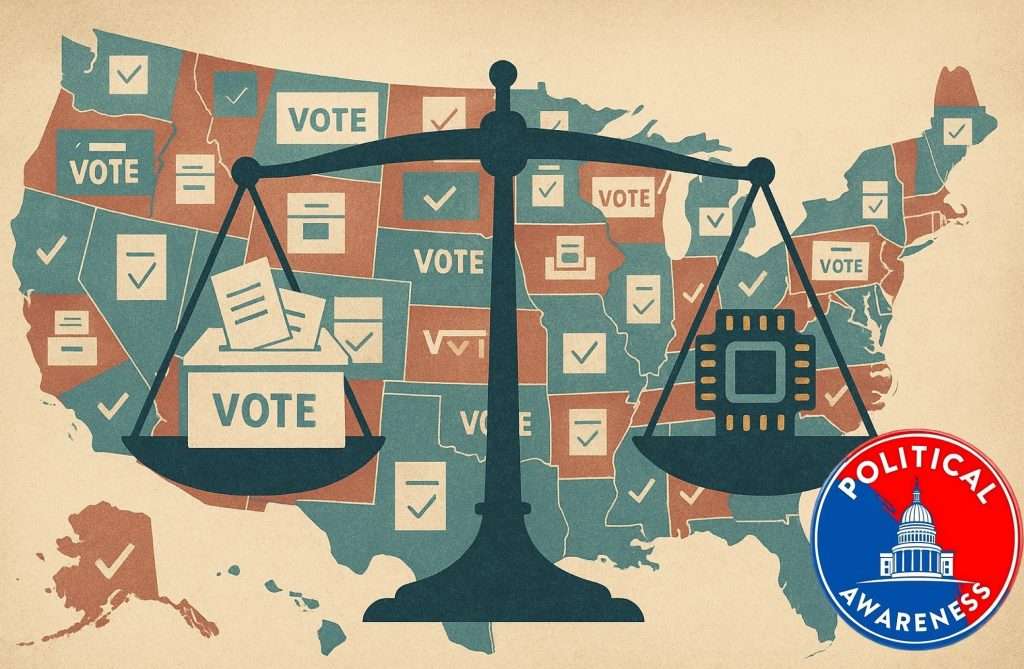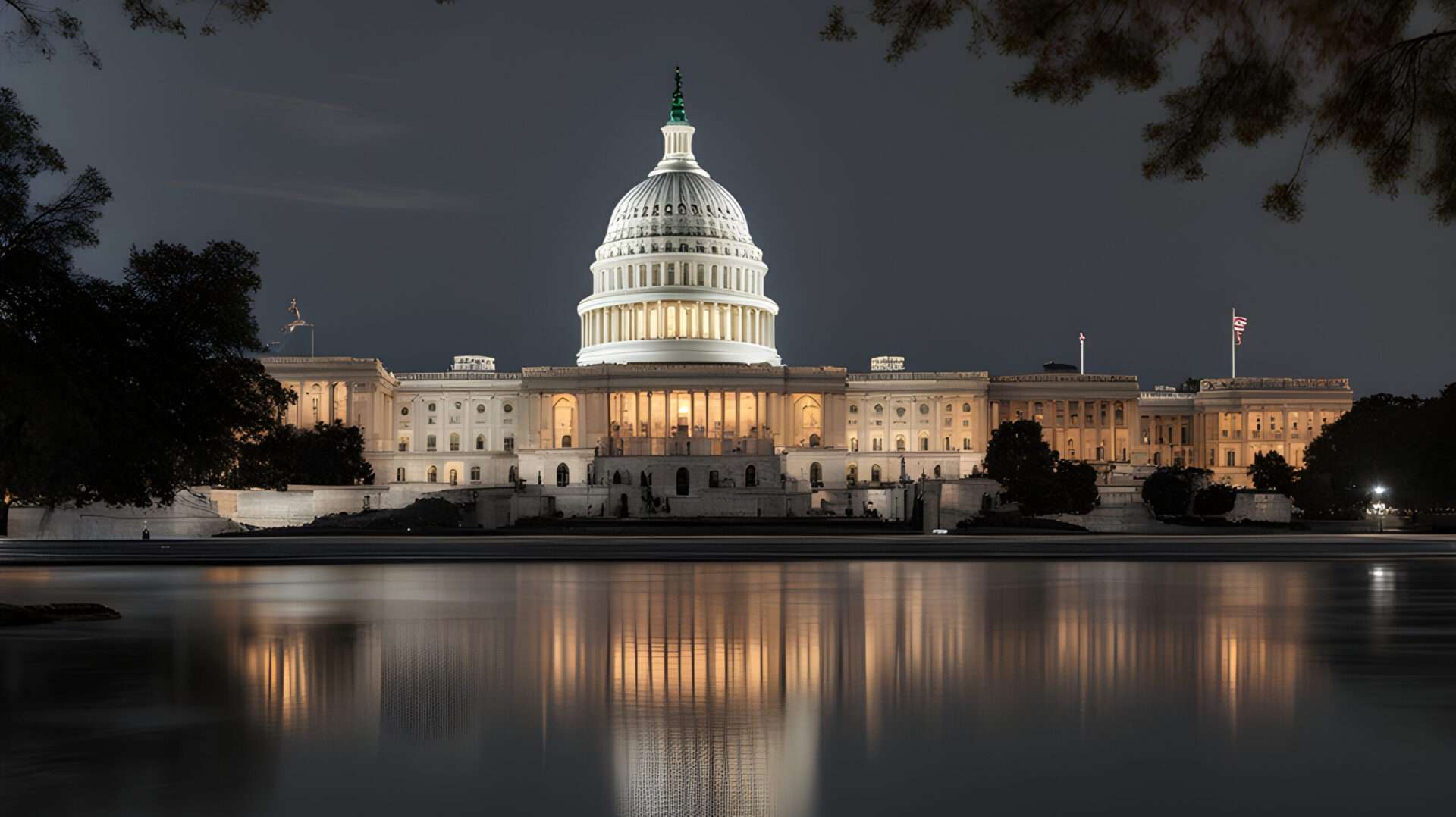Note: Political Awareness’s published communication is never authorized by any candidate or their committees.
US Election Integrity and Voter Access in 2025
The 2024 cycle closed with more than votes tallied — it left a country wrestling with the idea of whether its elections remain both secure and accessible. The debates that once lived in policy papers now live at kitchen tables: were votes counted correctly? Were some communities shut out? Did social media help or harm voters’ understanding? These are not abstract arguments. They determine whether Americans feel a stake in democracy or drift into resignation.
Across states, lawmakers responded to 2024 in different ways. Some moved to expand access: clearer ID pathways, longer early-voting windows, and upgrades to ballot dropbox infrastructure. Others tightened rules, citing security concerns: narrowed absentee windows, stricter signature verification standards, and limits on third-party voter assistance. The result is a patchwork that matters. Turnout and trust do not operate on a national thermostat — they change with local procedures and officials’ reputations. A voter in one county can experience a different reality than a voter across the state line.
Voting technology also took center stage. After incidents of slow machines and confusing software in some jurisdictions, election officials prioritized investments: replacing aging tabulators, running more pre-election logic and accuracy tests, and expanding post-election audits in jurisdictions that could afford them. But technology cuts both ways. Where officials invested, voters enjoyed faster counts and clearer explanations; where budgets lagged, delays and confusion eroded confidence. The federal government and foundations funneled some emergency funding to vulnerable counties, yet the scale of need remains huge. Patching legacy systems without standard national protocols will keep producing uneven results.
Misinformation continued to complicate every step. Platforms tightened moderation and flagged more viral falsehoods, but bad information still moves fast. The debate around platform intervention intensified: critics worry that moderation can overreach, and feed claims of censorship; defenders argue that without clearer gatekeeping, lies will suppress turnout and distort choices. That tension sits at the heart of election legitimacy: people must both have access to accurate information and trust the channels that deliver it.
Disenfranchisement concerns remain acute. The 2024 cycle revived debates about felon re-enfranchisement, voter roll purges, and the role of provisional ballots. Some states expanded re-enfranchisement and created clearer restoration processes. Others tightened the rules in response to fraud allegations — legitimate or not. The immediate effect runs deeper than the ballot: when entire communities perceive the system as indifferent or hostile, they disengage. Policymakers sometimes treat participation as a mechanical problem to be solved with technology and forms. In reality, restoring participation demands policy, outreach, and muscle memory — repeated cues from trusted institutions that voting matters and that ballots will count.
So where does that leave turnout, trust, and legitimacy in 2025? First, turnout will remain uneven. Places that simplified access and invested in transparent procedures will likely preserve or even grow civic participation. Places that tightened access or offered incoherent rules will see stagnation or decline. Second, trust will hinge on visible accountability. Audits, transparent chain-of-custody practices, and public reporting of problems — with clear, timely remedies — rebuild confidence faster than legal skirmishes that end in months. Third, legitimacy depends on shared narratives about fairness. When political elites amplify conspiracy or doubt without evidence, they erode the norms that make elections meaningful.
Practical reforms can help. Standardizing basic safeguards — mandatory post-election audits, public release of routine testing data, and federal support targeted at counties with legacy hardware — would reduce both real errors and the perception of manipulation. Investing in voter education campaigns, especially in historically undercounted communities, raises turnout and reduces confusion on election day. And designing moderation policies that combine speed, transparency, and appeal avenues can limit the spread of disinformation while preserving legitimate debate.
But the structural solutions need political will. Too often, short-term advantage drives policy choices that produce long-term costs. Tightening access in the name of security may yield political wins for some actors, but it will also hollow out civic participation and seed resentment. Conversely, expanding access without commensurate investment in secure infrastructure invites genuine vulnerabilities. The right path balances both aims protect the integrity of ballots and make participation easy, safe, and credible.
Finally, guardianship of trust depends on local leaders. County clerks, state election boards, and municipal officials make countless small decisions that shape the voter experience. Elevating professional training, insulating election administration from overt partisan pressure, and ensuring bipartisan oversight where local politics allow will go farther than sweeping national declarations. Democracy is, after all, a practice more than a policy. The choices officials make between now and 2026 will either reinforce that practice or weaken it.
If we are serious about turnout and legitimacy, we must stop treating election integrity as a zero-sum political tool. We can and should secure our systems, but we must do so while removing unnecessary barriers and restoring confidence through transparency and accountability. Voters deserve both protection from fraud and reassurance that their voice matters. The health of our democracy depends on delivering both.


Leave a Reply